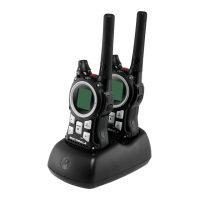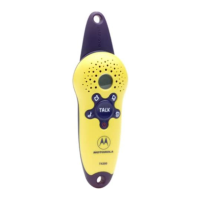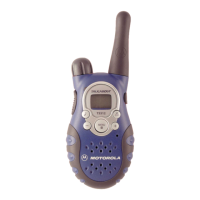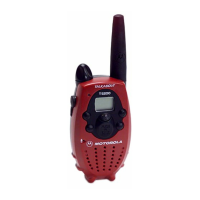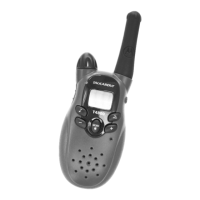FOR PORTABLE TWO-WAY RADIOS
When transmitting with a portable radio, hold the radio
in a vertical position with its microphone one to two
inches (2.5cm to 5.0cm) away from your mouth. Keep
antenna at least one inch (2.5cm) from your head and
body when transmitting. If you wear a portable radio on
your body, ensure that the antenna is at least one inch
(2.5cm) from your body when transmitting.
ELECTROMAGNETIC INTERFERENCE/COMPATIBILITY
Nearly every electronic device is susceptible to electro-
magnetic interference (EMI) if inadequately shielded,
designed or otherwise configured for electromagnetic
compatibility.
• To avoid electromagnetic interference and/or compat-
ibility conflicts, turn off your radio in any facility where
posted notices instruct you to do so. Hospitals or
health care facilities may be using equipment that is
sensitive to external RF energy .
• When instructed to do so, turn your radio off when on
board aircraft. Any use of a radio must be in accor-
dance with airline regulations or crew instructions.
Cautions and Warnings
ACAUTION
Damaged Antennas
Do not use any radio that has a damaged antenna. tf a damaged
antenna comes in contact with the skin, a minor burn may result.
Batteries
All batteries can cause property damage and/or bodily injury such as
burns if a conductive material such as jewelry, keys or beaded chains
touches exposed terminals. The material may complete an electrical cir-
cuit (short circuit) and become quite hot. Exercise care in handling any
charged battery, particularly when placing it inside a pocket, purse or
other container with metal objects.
AWARNING
For Vehicles With an Air Bag
Do not place a portable radio in the area over an air bag or in the air bag
deployment area. Air bags inflate with great force. If a portable radio is
placed in the air bag deployment area and the air bag inflates, the radio
may be propelled with great force and cause serious injury to occupants
of vehicle.
Potentially Explosive Atmospheres
Turn your radio OFF when in any area with a potentially explosive atmo-
sphere, unless it is a type especially qualified for such use (for example,
Factory Mutual Approved). Sparks in such areas could cause an explo-
sion or fire resulting in bodily injury or even death .
Batteries
Do not replace or change batteries in a potentially explosive atmosphere.
Contact sparking may occur while installing or removing batteries and
cause an explosion.
Blasting Caps and Areas
To avoid possible interterence with blasting operations, turn your radio
OFF near electrical blasting caps or in a "blasting area" or in areas
posted: "Turn off two-way radio". Obey all signs and instructions.
Note: Areas with potentially explosive atmospheres are often, but not
always, clearly marked. They include fuelling areas such as below deck
on boats, fuel or chemical transfer or storage facilities; areas where the air
contains chemicals or particles, such as grain, dust, or metal powders;
and any other area where you would normally be advised to turn off your
vehicle engine.
Patent Information:
5699006 5789098
5734975 5861850
5742484 5864752
0383745
0387758
0389139
0389158
0389827
0395882
0399821
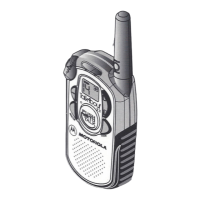
